Ukraine conflict: Where are Russia's troops?
- Published
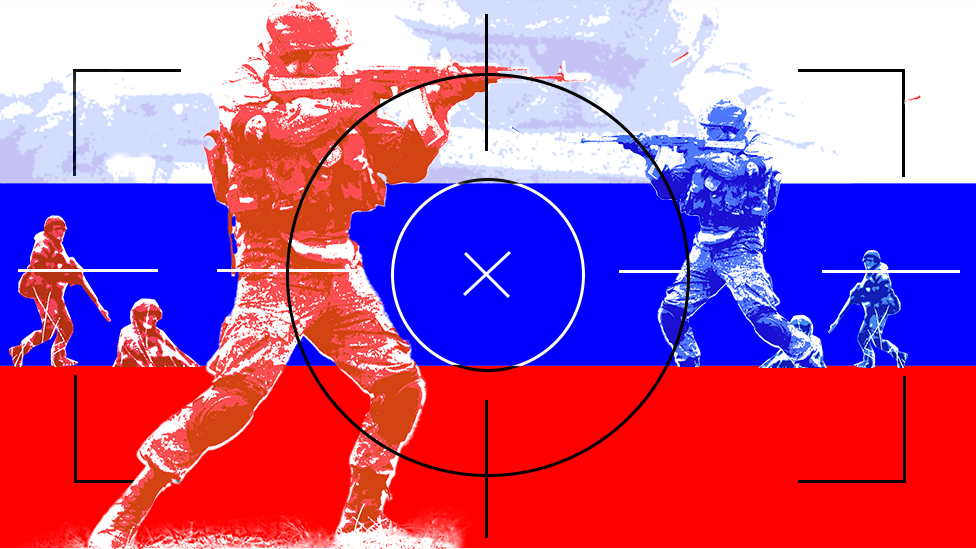
Vladimir Putin has ordered Russian troops into eastern Ukraine, after recognising two rebel-held regions as independent states.
Military units heading into Ukraine will be drawn from up to 190,000 personnel gathered close to Ukraine's borders in recent months.
They are equipped with everything from tanks and artillery to air power and naval support.
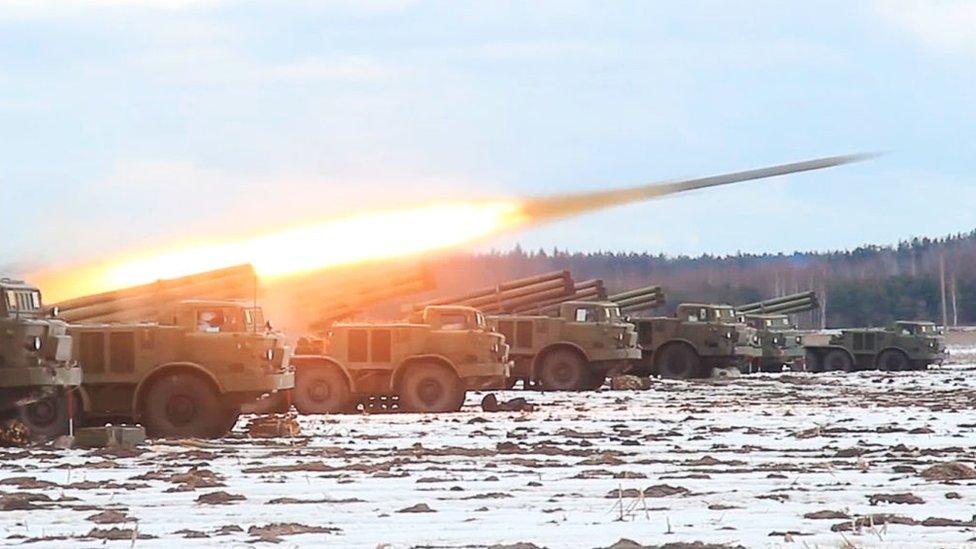
Rocket launchers being fired in joint military drills in Belarus
What is happening in east Ukraine?
On Monday, Mr Putin decided to recognise the two Russian-backed regions in east Ukraine, the self-styled Donetsk People's Republic and the Luhansk People's Republic, as independent states.
A short while later, he ordered troops into the two regions to "maintain peace".
Pictures emerged appearing to show Russian military vehicles heading towards the Ukrainian border.

The US said it was "nonsense" to describe the Russian troops in Ukraine as "peacekeepers".
Ukraine's president said his country was "not afraid of anything or anyone".
Troop numbers
The estimated number of Russian troops deployed in and around Ukraine has ranged from 100,000 to 190,000 in recent weeks.
On Friday, the US government said Russia had between 169,000 and 190,000 personnel in and around Ukraine.
A statement, external by the US ambassador to the Organization of Security and Cooperation in Europe (OSCE), Michael Carpenter said: "This estimate includes military troops along the border, in Belarus, and in occupied Crimea; Russian National Guard and other internal security units deployed to these areas; and Russian-led forces in eastern Ukraine."
Earlier, UK defence secretary Ben Wallace said that 60% of Russia's land forces were near Ukraine's borders with Russia and Belarus.
Ukraine's defence minister has suggested a figure of 149,000.
Last week, Russia's deputy ambassador to the UN, Dmitri Polanski said: "All this is happening in the heads of our western colleagues."
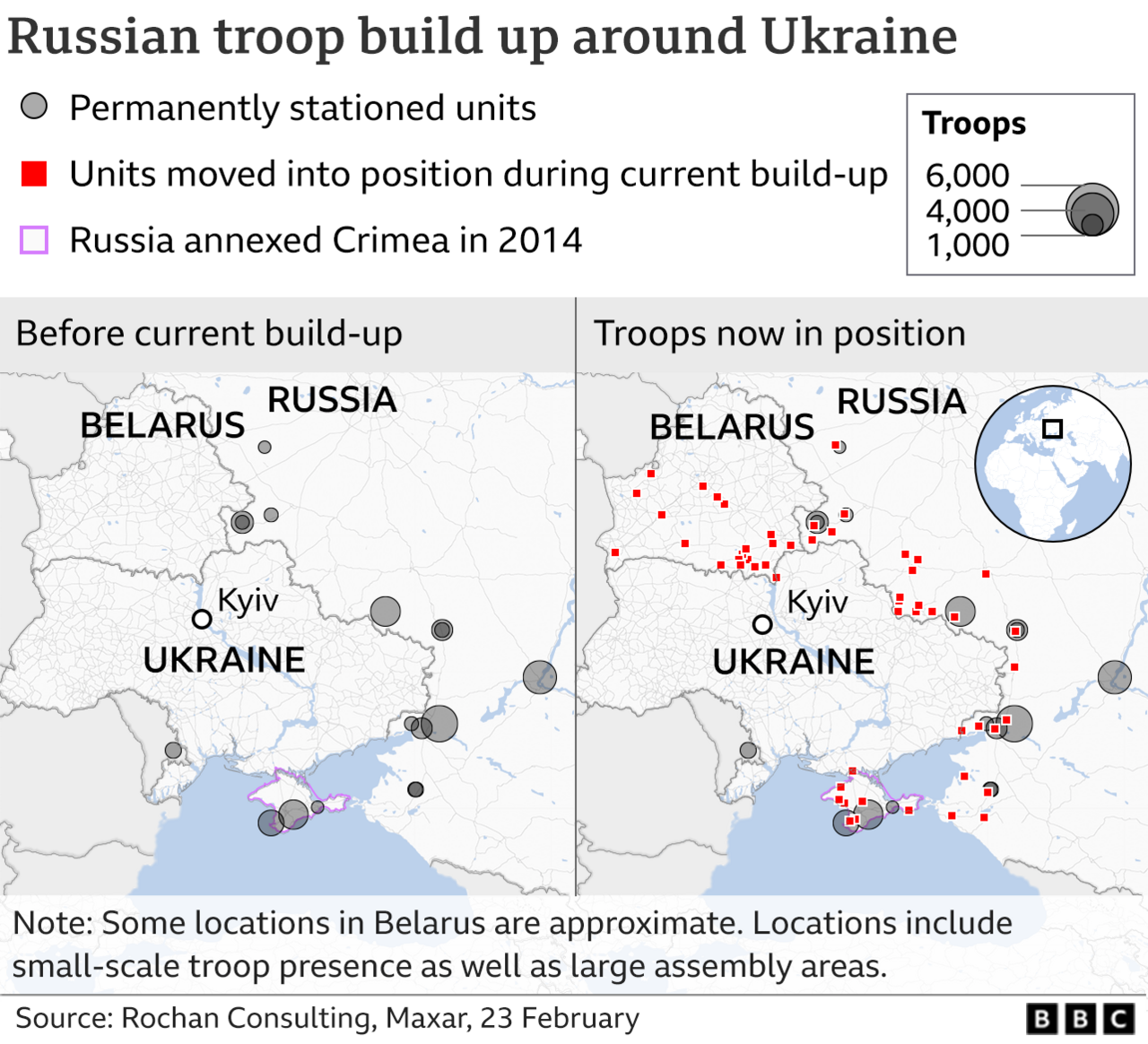
Last week, Russia's defence ministry said some troops from the southern and western military districts had completed their exercises and were returning to their permanent bases.
But Nato said it had not seen evidence of any de-escalation on the ground.
Its secretary general Jens Stoltenberg said: "On the contrary, it appears that Russia continues the military build-up."
Close to the border
On Monday Mr Wallace said: "Contrary to Kremlin assurances we have seen a continued increase in troop numbers and a change in force disposition moving from holding areas to potential launch locations."
Western officials, speaking on condition of anonymity, said the latest intelligence indicated that more Russian troops had moved to within striking distance of Ukraine.
Two thirds of the forces, they said, were now within 50km of the border. Of those, around half were now "tactically deployed", a state of readiness that cannot be sustained for prolonged periods.
Satellite images also suggest that some military units have split into small groups close to Ukraine's borders.
Some are hidden behind treelines in forested areas.
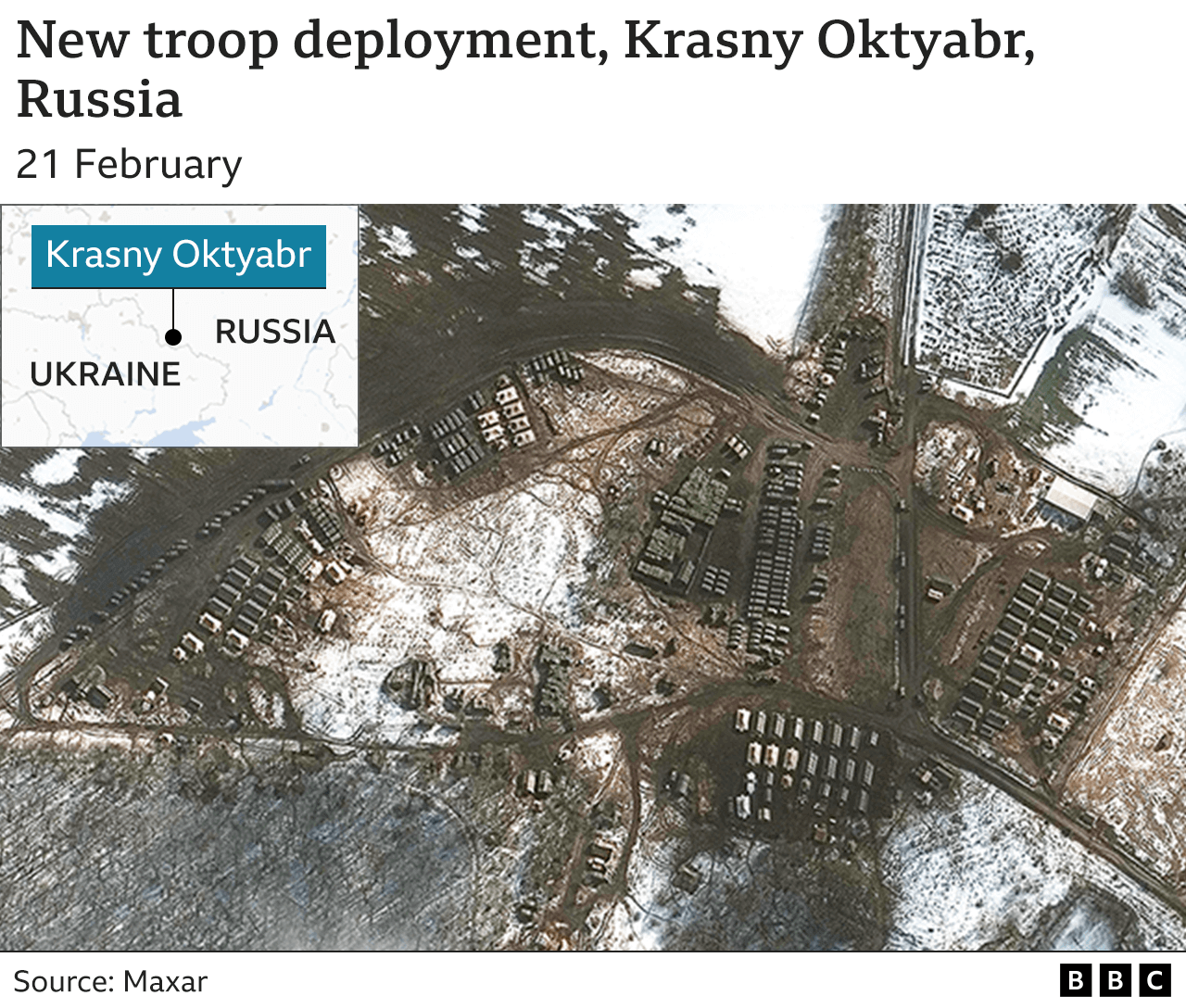
Images of the Yelnya training ground, about 300 miles (500km) north of Ukraine, appear to show a large pull-out of vehicles between January and February.
Some analysts believe, external they were among those headed to areas closer to Ukraine's border.
Your device may not support this visualisation
Support units moving in
Reports suggest that key support units necessary for an invasion have moved into position alongside combat troops.
They are thought to include tank repair workshops, mud clearance equipment and field hospitals with blood supplies, external in some areas.
UK Prime Minister Boris Johnson has said that the presence of field hospitals "can only be construed as a preparation for invasion".
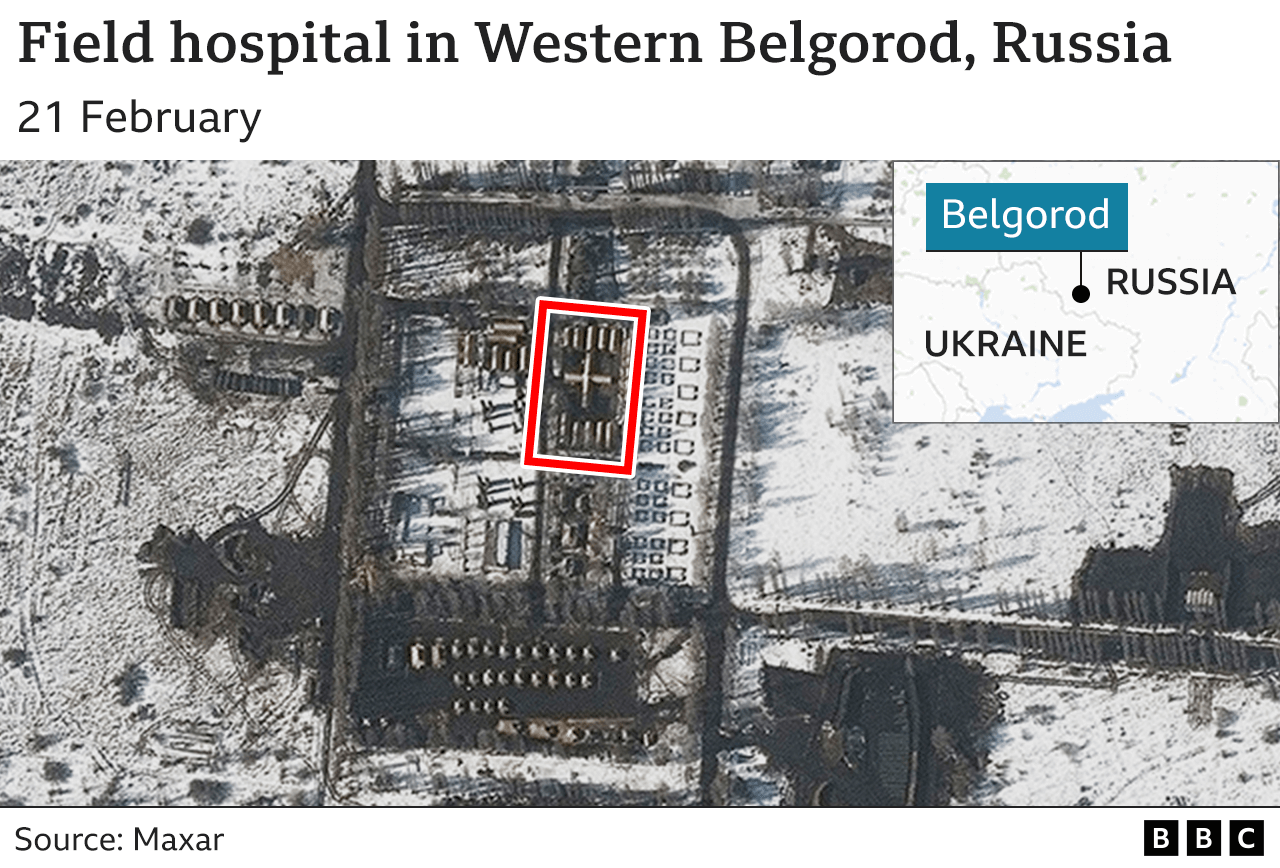
Units arriving from across Russia have been added to about 35,000 military personnel who are permanently stationed close to Ukraine's border.
Some units have travelled almost 4,000 miles from the Russian Far East.
Much of the heavy armour has been brought in by rail, some passing through Kursk, approximately 80 miles (130km) from the Ukraine border.
Other vehicles have arrived by road, via Karachev in the Bryansk region.
Watch: Social media videos show Russian military equipment on the move by road and rail
Many experts believe that a full-scale invasion, followed by an occupation of most or all of Ukraine, would require many more troops, external than Russia has currently assembled.
Build-up in Crimea
Satellites have detected a sharp rise in activity in Crimea, external where, according to one assessment, an additional 10,000 troops arrived in late January and early February.
It's believed they include infantry and airborne forces, and that some units have been put on the highest level of readiness.
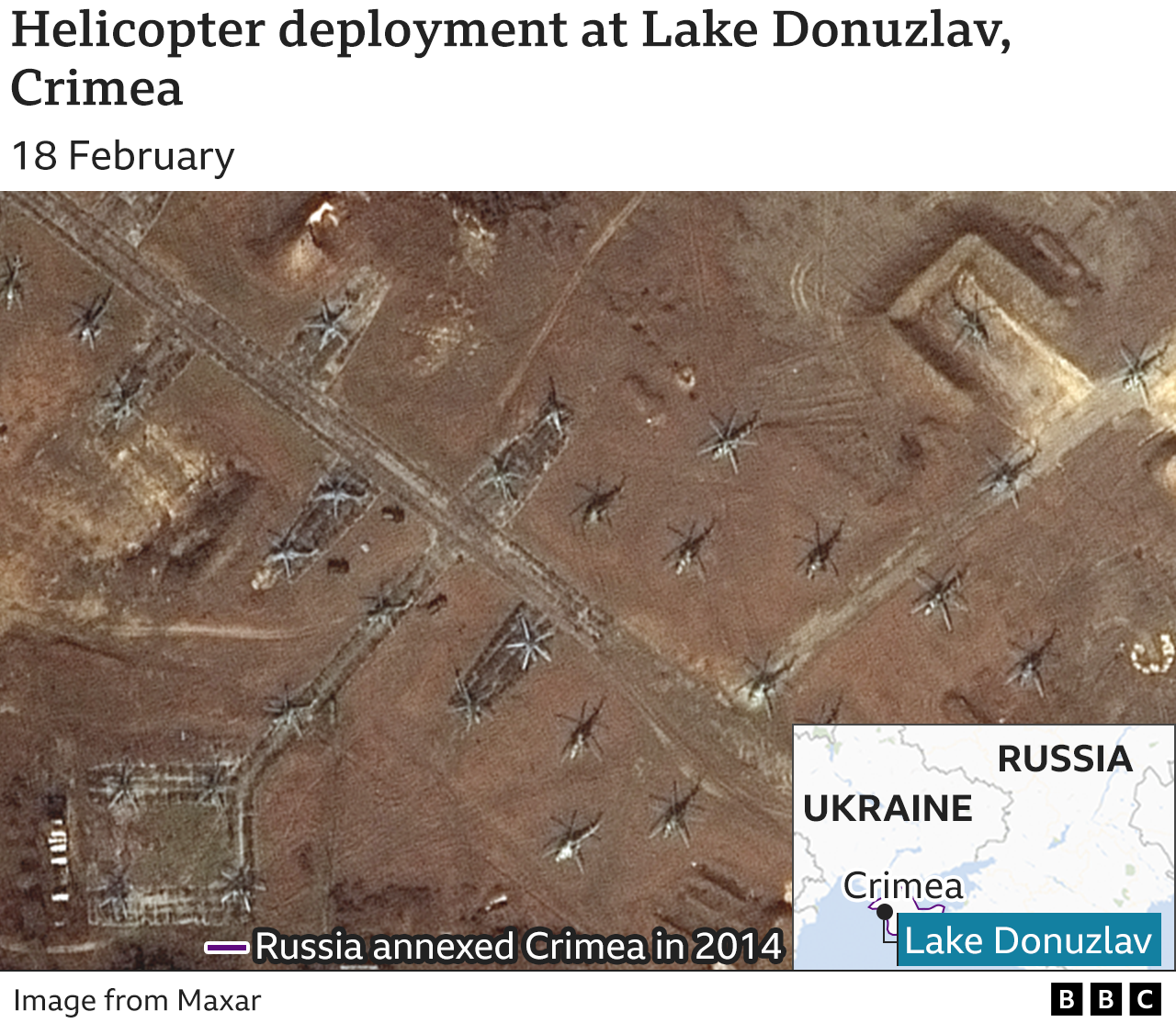
Build-up in Belarus
Joint military exercises in Belarus were scheduled to run until 20 February, but have been extended.
A statement cited the "deterioration of the situation" in east Ukraine as one reason for the decision.
Your device may not support this visualisation
Russia is thought to have deployed Iskander short-range ballistic missile launchers and Speznaz special operations forces, as well as key air defences.
The Ukrainian capital, Kyiv, is less than 100 miles (150km) from the border, and Mr Johnson says he believes that Russia is planning to attack from Belarus.
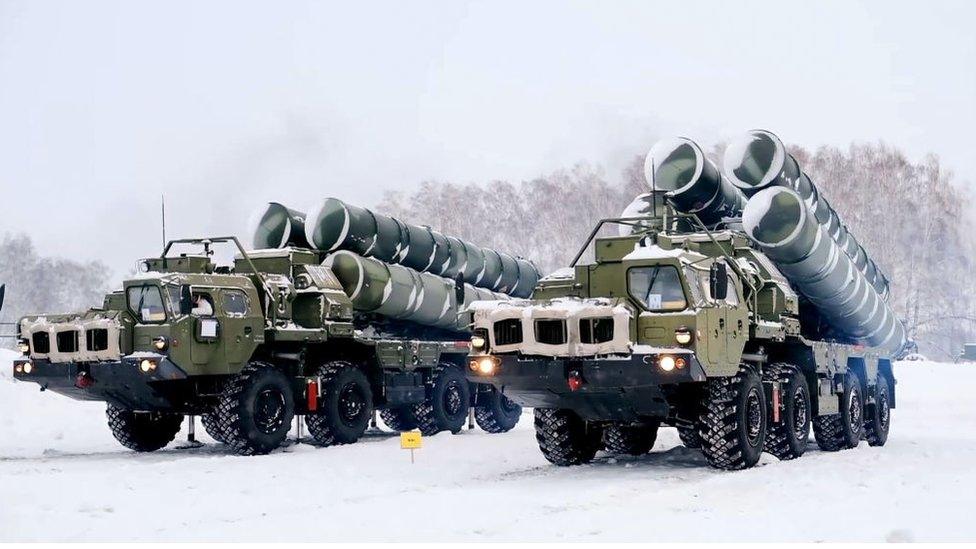
Russian S-400 air defence systems in Belarus
Build-up at sea
Russia has been holding worldwide naval drills, from the Atlantic to the Pacific, running through February, involving about:
140 ships and support vessels
60 aircraft
10,000 personnel

The Admiral Essen frigate leaves Sevastopol on 25 January
Russian vessels in the Black Sea and the Sea of Azov include six vessels which passed through the English Channel in January.
They are capable of landing main battle tanks, personnel and armoured vehicles.
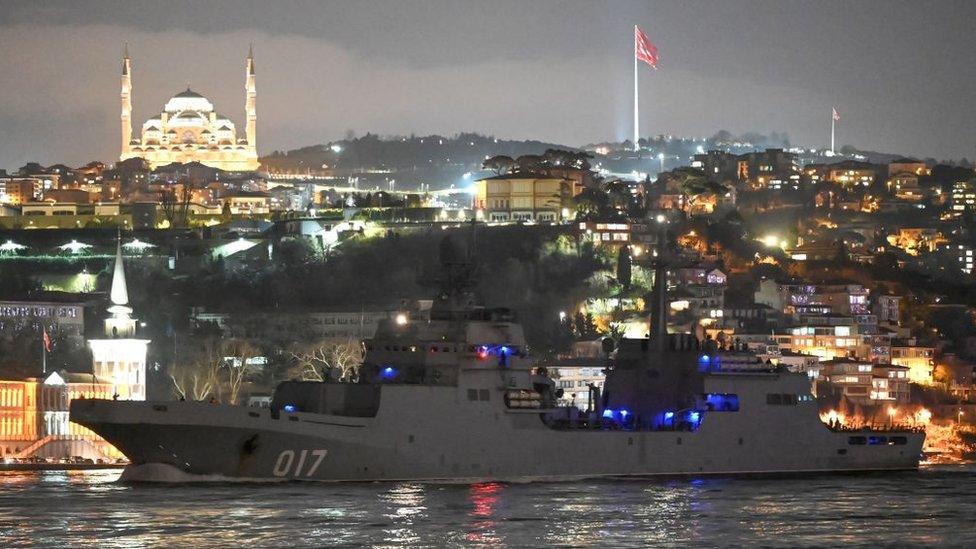
The Pyotr Morgunov sails through the Bosphorus Strait en route to the Black Sea
Russia is thought to have positioned amphibious assault vessels to the east and west of Crimea in both the Black Sea and the Sea of Azov.
Nine of its ships in the Black Sea region are equipped with cruise missiles. A further four Russian ships equipped with cruise missiles are in the Caspian Sea.
Russia has also issued a new warning to aircraft to avoid a large danger zone in the Sea of Azov.
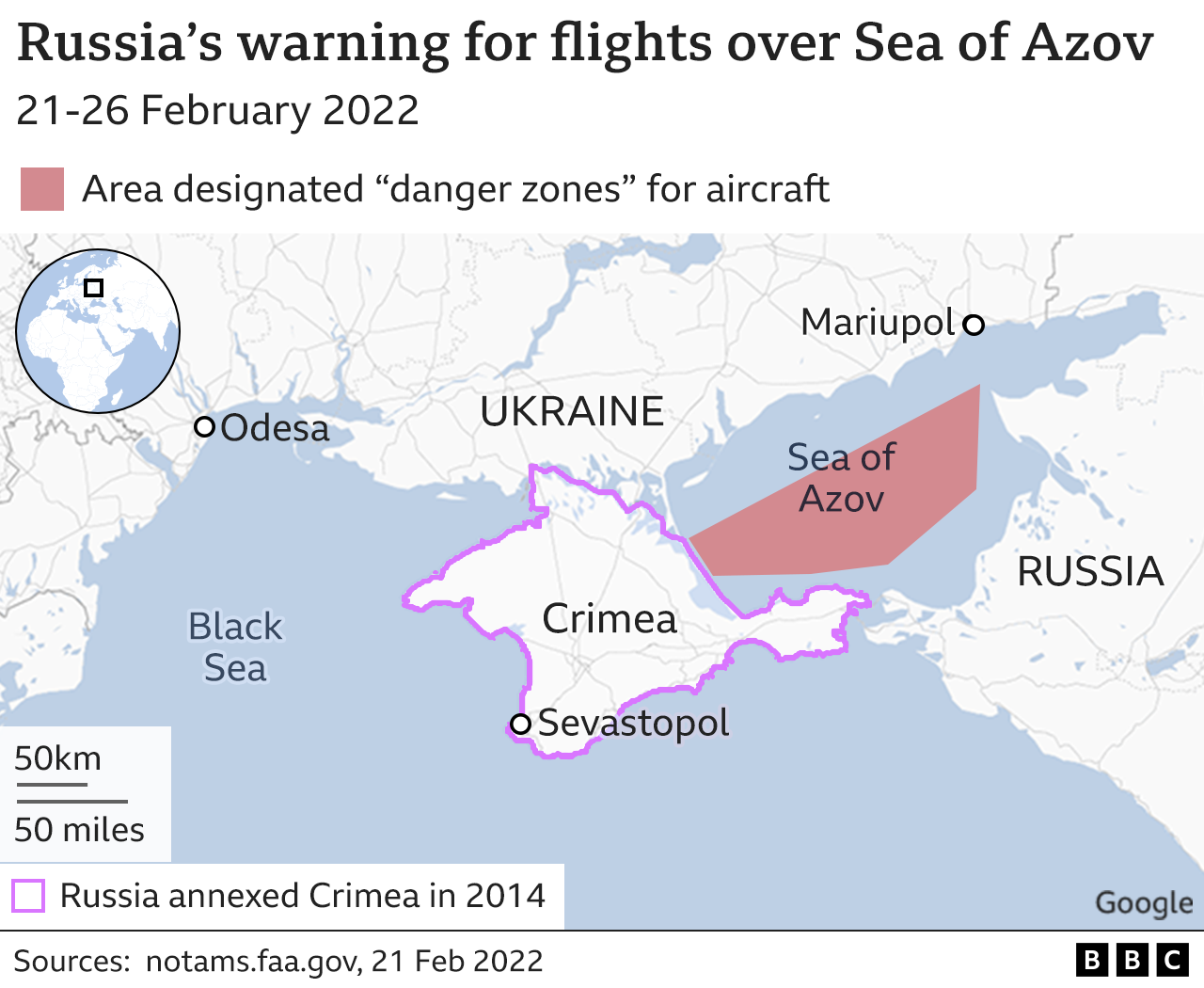
Some analysts, external say an amphibious landing by Russian troops would be extremely difficult and the naval forces may be a "feint" to draw Ukrainian ground forces away from more likely routes of attack on land.
Graphics by Sandra Rodriguez Chillida and Prina Shah.